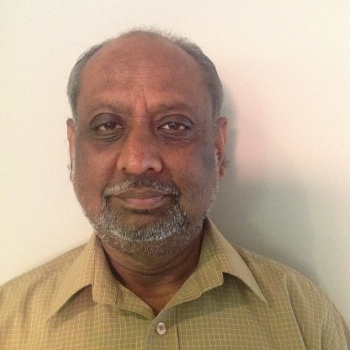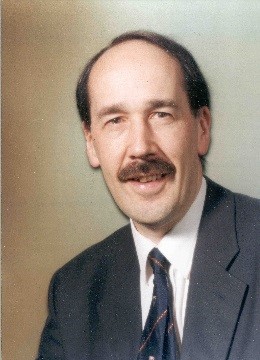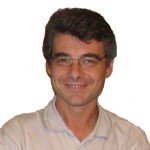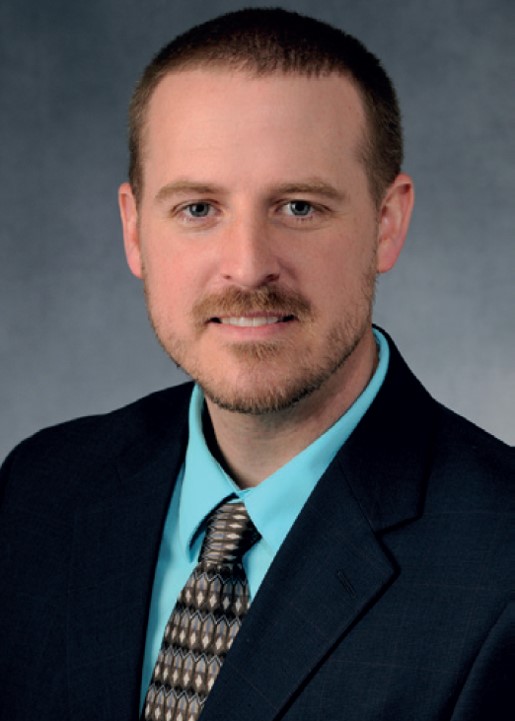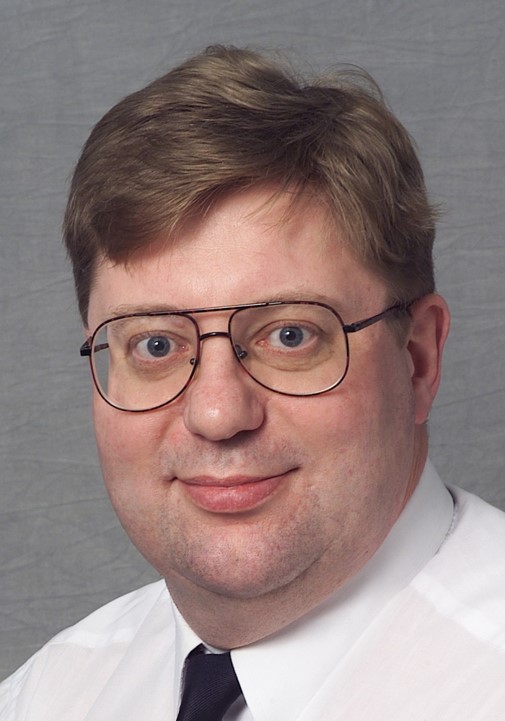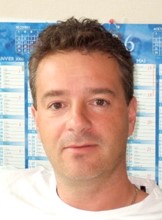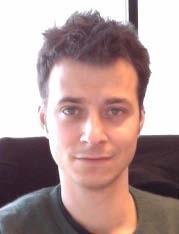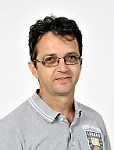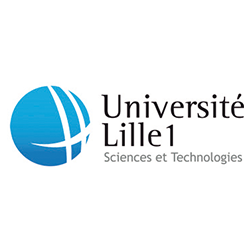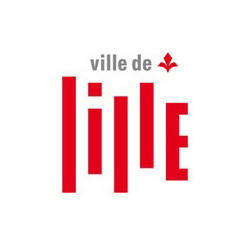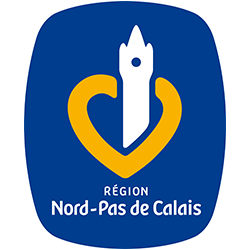
Frédéric Barbaresco
TUTORIAL 1 : Modern Radar Processing based on Geometry of Structured Matrices & Information Geometry
Since mid of last century, Radar Signal Processing problems have been formalized with linear functions on vector spaces and solved with classical Linear Algebra, and have used only a small part of tools that have been developed in mathematics. On the contrary in Physics, progresses have been accomplished by intensive adaptation of modern geometric theories. Differential manifolds could be naturally introduced in Radar Signal Processing by considering Information Geometry theory based on seminal paper of Rao, where the Fisher Matrix defines a metric in parameters space of density of probabilities. This Fisher differential metric defines a natural “information” manifold for raw radar data. These geometric tools lead to greater insight and better Radar signal algorithms performances due to their “intrinsic” properties to solve complex problems, where classically Linear Algebra uses ad-hoc projections approaches. The tutorial will introduce theses new geometries in the framework of Radar Signal Processing: Information Geometry for Radar statistical laws, Metric space and Cartan-Siegel Homogeneous Bounded domains Geometry for structured Radar covariance matrices and general framework of Koszul Hessian Geometry for Maximum Entropy estimation. Associate tools for these geometries will be explained in details like Siegel metric for Hermitian Positive Definite matrices, Partial Iwasawa Decomposition for Toeplitz HPD matrices, Mostow/Berger fibration for Toeplitz-Block-Toeplitz Matrices, Karcher flow on manifold, p-mean barycenters on Fréchet metric spaces. These new innovative Radar Processing methods will be illustrated for different applications like joint high-Doppler-resolution and ordered statistic CFAR, ordered statistic STAP (Robust STAP), Riemannian Anti-Jamming processing, Riemannian Polarimetric data segmentation, Multi-Parameter SAR processing, Non-linear tracking, …
Biography
Frédéric Barbaresco received the State Engineering degree from the French Grand École SUPELEC, Paris, France, in 1991. Since then, he began to work for THALES Group, where he is now Senior Scientist and Advanced Studies Manager in Advanced Radar Concept Department of Surface Radar Domain of THALES AIR SYSTEMS. He is IEEE AES member. He has been an Emeritus Member of SEE since 2011 and He was awarded the Aymé Poirson Prize (for application of Sciences to industry) by French Academy of Science in 2014, the Ampere Medal by SEE in 2007 and NATO SET Lecture Award in 2012 for his NATO Lecture from 2008 to 2011 in Europe and North America on Waveform Diversity and Design for Advanced Radar Systems. He has launched in 2009, the Leon Brillouin Seminar on Geometric Sciences of Information hosted by IRCAM and IHP in Paris, France. He has organized Special Sessions on Information Geometry in radar conferences: IRS’11 and IRS’13, EURAD’12. He is a coordinator of Springer Lecture Notes on “Matrix Information Geometry” published in 2012. He was an invited lecturer for UNESCO “Advanced School and Workshop on Matrix Geometries and Applications” in Trieste in June 2013. He is the General Chairman of the new international conference GSI “Geometric Sciences of Information: Information Geometry Manifolds and their Advanced Applications”, first edition GSI’13 at École des Mines in Paris during summer 2013. He is editor of “Geometric Science of Information” book published by SPRINGER in 2013, and one of main contributors of the SPRINGER bookGeometric Theory of Information” that will be published in 2014. His research interests mainly focus on geometric science of information for robust radar processing. He is author or coauthor of over 90 papers and an inventor of over 15 patents for THALES GROUP.
Eli Brookner
TUTORIAL 2 : Phased Arrays and Digital Beam Forming: Basics, Past-Accomplishments, Amazing-Developments & Future-Trends
Array basics: phase scanning, embedded element, time delay steering, elements, thinned arrays, array factor, u-v space, errors, mutual coupling, array blindness, phase shifters, feeds; reduction of grating lobes formed at subarray level using overlapped subarrays; limited scan arrays; spurious free dynamic range; Digital Beam Forming (DBF): Advantages; Number of bits needed, reduction with increased number of subarrays and sampling rate; Breakthroughs/Future-Trends: DBF: Israel, Australia, Thales AESAs have A/D for every element channel, major achievement; mixerless direct conversion at S- and X-band with 400 MHz bandwidth; 20 dB extension of receiver dynamic range using nonlinear compensation, a 20 year advance; GaN: allows 5X to 10X power; metamaterials for electronic scanning without phase shifters, cloaking, wideband stealthing, WAIM, isolation; graphene for potentially continuing Moore’s Law; Very low cost arrays: $100’s for autos; radar on a chip; using COTS, FPGAs; Extreme MIMC: 4 T/Rs on one chip, $10 per T/R; MIMO (Multiple Input Multiple Output): Explained in simple terms; Where it makes sense and not; COSMOS: DARPA revolutionary program allows integration of III-V, CMOS and opto-electronics on one chip without bonded wires leading to higher performance, lower power, smaller size, components; Synaptic Transistors: Learning like human synaps
Biography :
BEE: The City College of the City of New York, ’53, MEE and DrSc: Columbia University ’55 and ’62.
Dr. Eli Brookner worked at Raytheon Company from 1962 and retired from there January 2014. There he was a Principal Engineering Fellow and worked on ASDE-X airport radar, ASTOR Air Surveillance Radar, RADARSAT II, Affordable Ground Based Radar (AGBR), major Space Based Radar programs, NAVSPASUR S-Band upgrade, COBRA DANE, PAVE PAWS, Missile Site Radar (MSR), COBRA JUDY Replacement, THAAD, Brazilian SIVAM,SPY-3, Patriot, BMEWS, UEWR, Surveillance Radar Program (SRP), Pathfinder marine radar, Long Range Radar (upgrade for >70 ATC ARSRs), COBRA DANE Upgrade, AMDR, Space Fence, 3DELRR, FAA NexGen ATC radar program. Prior to Raytheon he worked on radar at Columbia University Electronics Research Lab. [now RRI], Nicolet and Rome AF Lab.
Received IEEE 2006 Dennis J. Picard Medal for Radar Technology & Application “For Pioneering Contributions to Phased Array Radar System Designs, to Radar Signal Processing Designs, and to Continuing Education Programs for Radar Engineers”; IEEE ’03 Warren White Award; Journal of the Franklin Institute Premium Award for best paper award for 1966; IEEE Wheeler Prize for Best Applications Paper for 1998. Fellow of IEEE, AIAA,MSS. Member of the National Academies Panel on Sensors and Electron Devices for Review of Army Research Laboratory Sensors and Electron Devices Directorate (SEDD).
Published four books: Tracking and Kalman Filtering Made Easy, John Wiley and Sons, Inc., 1998; Practical Phased Array Antenna Systems (1991), Aspects of Modern Radar (1988), and Radar Technology (1977), Artech House. Gives courses on Radar, Phased Arrays and Tracking around the world (25 countries). Over 10,000 attended these courses. Banquet/keynote speaker twelve times. >230 papers, talks and correspondences, >100 invited. Six paper reprinted in Books of Reprints (one in two books). Contributed chapters to three books. Nine patents.
Les Novak
TUTORIAL 3 : Interrupted SAR: Sparse Reconstruction for Reliable Change Detection
An important advance in today’s radar technology is the development of systems that use active array antennas; systems such as the F-35 JSF employ active arrays which allow the radar to accommodate multiple modes -- search, track, SAR imaging, GMTI, etc. These radar modes compete for radar resources; thus, it may necessary to interrupt the SAR collection to perform other radar modes. Such interruptions leave data-gaps in coherent phase-history data which degrade SAR image quality. Novel image formation algorithms are required to alleviate artifacts introduced into SAR imagery due to interrupted SAR data collections. This tutorial focusses on Compressive Sensing approaches for reconstructing complex SAR imagery from interrupted SAR phase-history data. A baseline reconstruction approach using Basis Pursuit DeNoising (BPDN) accurately reconstructs SAR images from phase-history data having arbitrary data gaps: single contiguous gaps, periodic gaps, random unit-width gapping patterns, or combinations of these gapping patterns. Image quality of reconstructed imagery is sufficient for performing accurate/robust SAR change detection, for visual target recognition by image analysts, and for computer-based algorithms. 2-pass change detection uses independently processed BPDN-reconstructed reference and mission images to form SAR change images. Multi-pass change detection uses jointly BPDN-processed images under a group sparsity (GS) constraint, giving enhanced change detection performance. Algorithm comparisons are performed using Gotcha SAR data and accurate/reliable ground truth information. Target-vehicle detections and false-detections are appropriately combined into PD vs. PFA ROC curves.
Biography :
Les Novak received his PhD degree in Electrical Engineering from UCLA and worked at MIT Lincoln Laboratory from 1977 to 2003 where he held the position of Senior Technical Staff in the Sensor Exploitation Group; he worked on the development of target detection, acquisition, and classification algorithms for synthetic aperture radar. He collaborated on development and procurement of the Lincoln Laboratory 35 GHz Full Polarization Synthetic Aperture Radar and developed the Polarization Whitening Filter (PWF algorithm) for combining the multi-channel SAR data into a visually clear minimum speckle image having enhanced image quality; he was awarded the status of IEEE Fellow in 2002 for this work. He investigated the utility and benefits of full-polarization SAR data in detection and recognition of military ground targets – and developed the polarization matched filter for maximizing target-to-clutter ratio from full-polarization data. He developed a full polarization change detection algorithm (POLCD) for the DARPA/Air Force foliage penetration program, resulted in DARPA funding the FOPEN program at MIT Lincoln Laboratory.
In 2003 he joined AlphaTech/BAE as Consulting Scientist, developing and testing FOPEN SAR change detection algorithms for the DARPA/Air Force foliage penetration program; algorithms performed successfully and were transitioned to military users. He was awarded an Air Force SAR image quality improvement program – achieved significantly improved target recognition performance after image quality enhancement approach implemented. In 2006 he joined Scientific Systems Company, Inc. as Senior Research Scientist; principle investigator of Air Force’s "Interrupted Synthetic Aperture Radar" program -- developed compressive sensing algorithms to mitigate effects of missing data (data gaps, etc.) on SAR image quality and to achieve reliable/robust coherent/non-coherent SAR change detection; principle investigator of "Cross-Platform Image Quality Metrics for SAR Target Recognition" program -- developed general image quality equations for predicting NIIRS ratings of complex imagery from measurable SAR imagery features; principle investigator on Navy’s "Compressive Sensing for DCGS-N" -- investigated utility of compressive sensing to NAVY radar and EO imagery -- recommended best utilization of CS signal and image processing approaches in airborne, ship, and ground station applications; principle investigator on Navy’s "Exploiting Agile Waveforms and Sampling for Compressive Sensing Radar" -- performed trade-off studies of random phase and frequency hopping waveforms for optimizing MIMO radar system performance. Also, during 2011, 2012, and 2013 he gave workshop presentations in support of the NATO SET-172 Lecture Series on Radar Automatic Target Recognition (ATR) and Non-Cooperative Target Recognition (NCTR). Lectures on the “Effects of Image Quality on SAR Target Recognition” and “Advances in SAR Change Detection” were presented at numerous (10) NATO countries.
Krishna Venkataraman
Tutorial 4 : Small Target Detection techniques and applications – An overview
Detection of low Radar Cross section (RCS) targets (e.g small boats) immersed in Sea clutter has always been a challenge. But there is a critical requirement to detect intruders (slow moving small boats) entering into the territorial waters, UAVs and also detection of submarine periscopes exposed just above the water surface. Of recently, birds flying at low and critical heights, have become potential aviation hazards too. All these targets have considerably small RCS with weak reflected power and masked by strong sea clutter (at high sea states) /ground clutter returns.
They exhibit low Doppler frequencies and conventional Doppler detection processes used in surveillance system may not always be used due to dwell length limitations to get sufficient Doppler information and sea returns having the same velocity range as that of the targets. Other options are various Track-before-detect methods such as Dynamic programming, Particle Filters, pulse-to-pulse and scan-to-scan integration techniques coupled with distribution-free CFAR supported by K-distributed clutter modelling research outcomes.
Of recently, several research outcomes have shown considerable improvement in the detectability of weak targets in heavy sea clutter with netted radar sensing that features data capture/analysis at varied aspect angles of the same target, thanks to the availability of low cost surveillance radar systems in the market.
This tutorial will provide an overview of the detection theory and techniques/ algorithms employed for small target detection, as discussed, with illustrations and models. It will also elaborate further studies and research undertaken and potential applications that are envisaged by the radar community.
Biography :
Krishna Venkataraman is a Radar Systems Engineer/ Scientist in Defence Science and Technology Organisation in Adelaide, Australia and Science and Technology Advisor, supporting the radar development in the microwave radar acquisition projects in the Department of Defence in Australia. His current research and development activities include intruder and non- cooperative targets detection with cost effective marine navigational radars in a networked environment, detection of (small RCS) biological targets, multiple utilities of weapon location radars in land and air combat scenario, modelling and analysis/assessment of Air Traffic Control radars in military environment etc.
He has over 40 years of radar back ground and his past activities in defence industries include, leading the development and implementation tasks of signal processing subsystems for S and L band naval surveillance radars, Doppler tracking facility for C band instrumentation radars for space launch vehicles, AEW radar signal processor etc. He was also involved in performance estimation/ measurements of critical spectral noise (Aeolian phase noise) and beam forming aspects of OTH radars.
He has conducted several workshops/ tutorials for civil and military personnel on Phased array radars and radar signal processing and representation as Radar Expert in high level technical brain storming discussions with Selenia, Italy for optimising naval radar configurations.
His research interests include small target detection in a marine environment with track-before detect methods, detection of biological targets, netted radar sensing, multi sensor data fusion, phase noise optimisation in non-coherent radar systems, mitigation of intentional/non-intentional interferences on ATC and other radar performances.
Krishna Venkataraman is a MEMBER and Chartered Professional Engineer (CPEn g) of the Institution of Engineers (Australia) and Institute of Electrical and Electronic Engineers (IEEE). He has presented/published several technical papers/ reports in International radar conferences and symposiums and journals.
Simon Watts
TUTORIAL 5 : The impact of clutter on radar performance and design
Modelling and simulation are essential elements of almost all aspects of engineering design and development of complex systems. Modern radar is no exception to this. In this tutorial a particular component of the design, development and testing processes of radar systems is examined, namely the use of modelling and simulation of radar clutter. The various stages in the life-cycle of radar systems are considered, considering the contributions made by clutter modelling. The tutorial will address the question of how the choice of clutter model and the results emerging from current research may have a significant quantitative effect on overall radar system models. In this way it will be shown how the latest clutter models may be used in the day-to-day design and assessment of radar systems. The first part of the tutorial will introduce the methods used to describe radar clutter and show how physical and empirical models are developed. The second part of the tutorial will show how clutter models are used to predict and analyse the performance of radar systems. The tutorial will particularly emphasise the modelling of sea clutter and it use in the design and development of airborne maritime surveillance radars.
The intended audience includes students, researchers, radar systems engineers and radar users. The topics will be presented at different levels ranging from introductory to advanced, in a manner that will aim to encourage interest and further reading.
Biography :
Simon Watts was previously deputy Scientific Director and a Thales Technical Fellow in Thales UK, and is currently an independent consultant and a Visiting Professor in the department of Electronic and Electrical Engineering at University College London. He joined Thales (then EMI Electronics) as a student apprentice in 1967 and worked on a wide range of radar projects, particularly undertaking research into airborne maritime surveillance radar design. He is author and co-author of over 45 journal and conference papers, a book on sea clutter and several patents. He was chairman of the international radar conference RADAR-97. He was appointed MBE in 1996 for services to the UK defence industry and is a Fellow of the Royal Academy of Engineering, Fellow of the IET, Fellow of the Institute of Mathematics and its Applications and Fellow of the IEEE.
Dr. Mark E. Davis
TUTORIAL 6 : Foliage Penetration Radar
Foliage Penetration (FOPEN) Radar is a technical approach to find and characterize man-made objections under dense foliage, as well as characterizing the foliage itself. It has applications in both military surveillance and civilian geospatial imaging. This Tutorial is divided into three parts.
The early history of FOPEN Radar: battlefield surveillance and the early experiments in foliage penetration radar are covered. There were some very interesting developments in radar technology that enabled our ability to detect fixed and moving objects under dense foliage. An important breakthrough was the quantification of the radar propagation through foliage, and related scattering and loss effects.
FOPEN synthetic aperture radar (SAR) with concentration on development results from several systems. These systems were developed for both military and commercial applications, and during a time of rapid awareness of the need and ability to operate in a dense signal environment. The tutorial quantifies the benefits of polarization diversity in detecting and characterizing both man made and natural objects. Furthermore, there is a clear benefit for use of polarization in false alarm mitigation. Finally the techniques developed for ultra wideband and ultra wide angle image formation will be presented.
New research in Multi-mode Ultra-Wideband Radar, with the design of both SAR and moving target indication (MTI) FOPEN systems. Particular note will be taken on the benefits and difficulties in designing these ultra-wideband (UWB) systems, and operation in real world electromagnetic environments. The tutorial will illustrate new technologies that have promise for future multimode operation: the need to detect low minimum discernable velocity; and simultaneous SAR and GMTI operation.
Biography: Dr Mark E Davis has over 45 years experience in Radar technology and systems development. He has held senior management positions in the Defense Advanced Research Projects Agency (DARPA), Air Force Research Laboratory, and General Electric Aerospace. At DARPA, he was the program manager on both the foliage penetration (FOPEN) radar advanced development program and the GeoSAR foliage penetration mapping radar. Dr Davis wrote the text ”Foliage Penetration Radar – Detection and Characterization of Objects Under Trees”, published by Scitech Raleigh NC in March 2011.
His education includes a PhD in Physics from The Ohio State University, and Bachelor and Masters Degrees in Electrical Engineering from Syracuse University. He is a Life Fellow of both the IEEE and Military Sensing Symposia, and a past member of the AESS Board of Governors and Chair of the Radar Systems Panel.
Hermann Rohling
TUTORIAL 7 : Waveform design in Automotive Radar Systems
Driving a car is a dangerous task! There are about 5000 fatalities on German streets every year, which are absolutely too many. Drivers have strong limitations in the ability to measure precisely the distance and the speed difference between cars, which is the reason for several accidents. The all-weather-capability as well as the capability of measuring target range and radial velocity simultaneously are some of the essential features, which make radar systems suitable for automotive applications.
Radio Detection and Ranging (RADAR) is a worldwide well-known sensor technique since more than 110 years. Collision avoidance between ships was the first application for this new technique. Today we come back to the collision avoidance application however now between cars in a normal road environment.
The general requirement on an automotive radar sensor in the 24 and 79 GHz frequency domain is to measure the target range R and radial velocity vr simultaneously and unambiguously with high accuracy and resolution even in multi target situations, which is a matter of the appropriate waveform design. Several new waveforms have been developed for this application in the last years. In any continuous wave (CW) radar the receive signal is directly down-converted into baseband by the instantaneous transmit frequency. The receive signal is then sampled and further processed for target detection and parameter estimation. The resulting beat frequency fB will be measured with high accuracy by an FFT procedure.
Biography :
Prof. Dr. Hermann Rohling is the Head of the Institute of Telecommunications at Hamburg University of Technology, where he has developed an international reputation for mobile communications and automotive radar systems. Prof. Rohling has started his career at the AEG Research Institute, Ulm, Germany, as a researcher working in the area of digital signal processing for radar and communication applications. Nowadays his research interests include signal theory, radar waveform design, digital radar signal processing, detection, and estimation. But his research interest covers also wideband mobile communications based on multicarrier transmission techniques (OFDM) for future broadband systems (4G), and differential GPS for high precision navigation. He is a worldwide well-known expert in automotive radar systems for more than 20 years.
Prof. Rohling is the President of the German Institute of Navigation (DGON), a member of Informationstechnische Gesellschaft (ITG), and a Fellow of IEEE. Every year he is the organizer and chairman of the International Radar Symposium (IRS). Prof. Rohling was the Vice President of the Hamburg University of Technology, Germany for more than six years.
The aim of the tutorial is to introduce multiple CW waveforms and describe their performance figures. With a single chirp waveform for example the target range and radial velocity cannot be measured in multiple target situations. Therefore several alternatives have been developed to fulfill the given requirements. Chirp sequence waveforms show good performance figures in this respect. The computation complexity will also be discussed.
TUTORIAL 8 : MIMO Radar
MIMO (multiple-input multiple-output) radar refers to the use of multiple transmitters and receivers, for sensing the environment and the targets present in this environment. Basically MIMO radar uses multiple antennas that transmit correlated or uncorrelated waveforms. For the last ten years MIMO has led to extensive research and publications, both in communications and Radar domains. Why such interest for MIMO in radar? Beside the prolific amount of publications, how to assess the interest of MIMO to overcome the current limitations of conventional radar? The tutorial attempts to answer these questions, as well as to provide the tools to understand the link between theoretical considerations and radar system design. After a summary of the state of art – we may notice that MIMO was invented more than 25 years ago – the course will provide the fundamentals of MIMO radar, how to define a MIMO radar configuration, introduce the signal model, waveform design, signal processing, detection and localization. A particular emphasis will be put on the coherent MIMO in conjunction with the unique properties of the MIMO steering vector. A large part of the course will be focused on applications, including MIMO-STAP for GMTI, low frequency radar for coastal maritime surveillance.
Biography :
Marc Lesturgie obtained the Engineering degree in 1985 from ENSAE in France (Ecole Nationale Supérieure de l'Aéronautique et de l'Espace), and a Master degree in Electronic & Microwave from University of Toulouse in 1986. In 2005 he obtained a Research Directorship Habilitation thesis from the University of Paris VI. He joined the French Aerospace Lab (ONERA) in 1987 and worked in a wide range of low frequency and new radar concepts, covering bistatic, multistatic and distributed radars. From 1996 to 2000 he is the head of the "New radar concepts" team in ONERA. In 2006, Marc Lesturgie is appointed as Director of SONDRA (Supelec-ONERA-NUS-DSTA Research Alliance) - a joint laboratory between France and Singapore. In 2007 he is the head of the Electromagnetics department in Supelec.In 2008, still Director of the SONDRA laboratory, Marc Lesturgie is also Deputy Director at the Electromagnetics and Radar Department of ONERA. Since 2005, he has been also an Adjunct Principle Research Scientist with the Temasek Laboratories, at the Nanyang Technological University in Singapore. Chairman of the SEE/Committee 23 (radio-location and navigation) between 2000 and 2006, he has organized several International conferences, acted as the Technical Chairman of the International Conference on Radar Systems in 2004 (Toulouse) and 2009(Bordeaux), and is the General Chair of the upcoming Radar 2014 International Conference in Lille. Marc Lesturgie is senior member of the IEEE, Fellow and Emeritus member of SEE and lectures regularly on radar topics in French and overseas Universities.
Braham Himed
TUTORIAL 9 : Overview of STAP Techniques and Applications
Adaptive Processing is becoming an integral part of modern airborne and space‐based radar (SBR) systems for Air/Ground/Surface Moving Target Indication. In particular, space‐time adaptive processing (STAP) techniques combine spatial and temporal degrees of freedom to detect moving targets in strong background interference consisting of clutter and jamming. STAP uses the multiple spatial channels in an antenna and the multiple coherent pulses transmitted and received by the radar to form an adaptive weight vector that is applied to the received data. To calculate the adaptive weight vector, the statistics of the interference environment are determined from the training data. The interference covariance matrix is not known a priori and must be estimated from independent and identically distributed (iid) data. However, experimental data has shown that this data is non-homogeneous, and hence violates the iid assumption. These facts are exacerbated when a bistatic, multistatic, spaceborne, or conformal radar configuration is employed. These issues and challenges will be identified and characterized in this tutorial. The tutorial begins with monostatic airborne radar, where the principles of STAP are formulated. These are then extended to a bistatic configuration, where the transmitter and receiver are not co‐located and move independently of each other. For SBR, the earth’s rotation around its axis adds another degree of difficulty and will be discussed next. These concepts are then extended to three‐dimensional conformal arrays in smaller platforms. We conclude the tutorial by considering multiple‐input multiple‐output (MIMO) radar systems operating in a distributed mode. Concluding remarks are then provided.
Biography :
Dr. Braham Himed received his B.S. degree in electrical engineering from Ecole Nationale Polytechnique of Algiers in 1984, and his M.S. and Ph.D. degrees both in electrical engineering, from Syracuse University in 1987 and 1990, respectively. Dr. Himed is a Technical Advisor with AFRL, RF Technology Branch, in Dayton Ohio, where he is involved with several aspects of radar developments. His research interests include detection, estimation, multichannel adaptive signal processing, time series analyses, array processing, space-time adaptive processing, waveform diversity, MIMO radar, passive radar, and over the horizon radar. Dr. Himed is the recipient of the 2001 IEEE region I award for his work on bistatic radar systems, algorithm development, and phenomenology. He is the recipient of the 2012 Warren White award for excellence in radar engineering. Dr. Himed is a Fellow of AFRL, a Fellow of the IEEE, and is the Vice-chair of the AES Radar Systems Panel
|
Shannon Blunt |
Hugh Griffiths |
Tutorial 10 : Spectrum Engineering and Waveform Diversity
The RF electromagnetic spectrum, extending from below 1 MHz to above 100 GHz, represents a precious resource. It is used for a wide range of purposes including communications, radio and television broadcasting, radio navigation, and sensing. Radar represents a fundamentally important use of the EM spectrum, in applications which include air traffic control, geophysical monitoring of Earth resources from space, automotive safety, severe weather tracking, and surveillance for defence and security. Nearly all services have a need for greater bandwidth. As the demand continues to grow for more access to spectrum by all these interested parties, there will be ever-greater competition for this finite resource. At the same time, modern digital signal processing techniques allow precise wide-bandwidth radar waveforms to be generated, with high spectral purity and whose properties can be varied adaptively, and this capability forms the basis of the subject of waveform diversity. The purpose of this tutorial, which is based on the work of NATO SET-179 and SET-182 Task Groups, is to describe and explain current work in spectrum engineering and waveform diversity.
Spectrum Engineering
- The spectrum congestion problem
- Radar transmitter spectral purity
- Passive Bistatic Radar and Commensal Radar
- Intelligent, cognitive processing
- Regulation
Waveform Diversity
- Waveform characteristics, metrics, and mathematical representations
- Physical effects impacting the waveform
- Waveform design/optimization
- Waveforms in nature
- MIMO radar waveforms
- Pulse-agile waveforms
- Emerging topics in waveform diversity & design
Biographies :
Shannon D. Blunt received the Ph.D. in electrical engineering from the University of Missouri in 2002. From 2002 to 2005 he was with the Radar Division of the Naval Research Laboratory (NRL) in Washington, D.C. Since 2005 he has been with the Department of Electrical Engineering and Computer Science at the University of Kansas (KU) where he is currently an Associate Professor and Director of the Radar Systems & Remote Sensing Lab (RSL). His research interests are in signal processing and system design for radar with a particular emphasis on waveform diversity techniques. Specifically, his research efforts have focused on the intersection of advanced signal processing with physically realizable systems and have included the development of new methods for robust interference cancellation, adaptive pulse compression, the optimization of physical radar emissions, radar-embedded communications, MIMO and pulse-agile radar.
In 2012 Prof. Blunt received the IEEE/AESS Nathanson Memorial Radar Award. In 2008 he received the Air Force Office of Scientific Research (AFOSR) Young Investigator Award to explore new methods for covert radar-embedded communications. He has also received multiple teaching awards at the University of Kansas where he teaches undergraduate courses in solid-state amplifiers and microwave engineering and a graduate course in adaptive signal processing. He has over 80 refereed publications, 11 patents, and co-edited the recent book Principles of Waveform Diversity & Design. He is a member of the IEEE/AESS Radar Systems Panel where he is currently Chair of the Conferences Committee. He is also an Associate Editor for IEEE Transactions on Aerospace & Electronic Systems and is on the Editorial Board for IET Radar, Sonar & Navigation. He was General Chair of the 2011 IEEE Radar Conference in Kansas City, and is Chair of the NATO SET-179 research task group on Dynamic Waveform Diversity & Design. He is a Senior Member of IEEE.
Hugh Griffiths holds the THALES/Royal Academy Chair of RF Sensors in the Department of Electronic and Electrical Engineering at University College London, England. From 2006–2008 he was Principal of the Defence Academy of Management and Technology. He received the MA degree in Physics from Oxford University in 1975, then spent three years working in industry, before joining University College London, where he received the PhD degree in 1986 and the DSc(Eng) degree in 2000, and served as Head of Department from 2001 – 2006.
His research interests include radar and sonar systems and signal processing (particularly synthetic aperture radar and bistatic and multistatic radar), and antenna measurement techniques. He has published over four hundred papers and technical articles in the fields of radar, antennas and sonar. In 1996 he received the IEEE AESS Fred Nathanson Award (Radar Systems Panel Award), and in 2012 he was awarded the IET A.F. Harvey Prize for his work on bistatic radar. He has also received the Brabazon Premium of the IERE and the Mountbatten and Maxwell Premium Awards of the IEE. He is a Fellow of the IET (previously IEE), Fellow of the IEEE, and in 1997 he was elected to Fellowship of the Royal Academy of Engineering.
He serves as President of the IEEE Aerospace and Electronic Systems Society for 2012/2013, and he is an IEEE AES Distinguished Lecturer. He has been a member of the IEEE AES Radar Systems Panel since 1989, serving as Chair from 2007 – 2009, and chaired the Working Group which revised the IEEE Radar Definitions Standard P686 and reaffirmed the Radar Letter Band Standard. He is Editor-in-Chief of the IET Radar Sonar and Navigation journal.
Eli Brookner
TUTORIAL 11 : Tracking and kalman filter made easy
Mystery taken out of following filters: αβ (GH), αβg (GHK), Fading Memory, Growing Memory, Least Squares, Benedict-Bordner, Polynomial, Kalman Filters. Very simple physical and algebra explanations and derivations given for all. Example designs given. Covered are Stability, Tracking Initiation. Why Kalman Filter? Where Kalman filter does not apply. Its relationship to GH, GHK and Benedict-Bordner Filters, Matrix Notation for. Real world practical issues covered of tracking in spikey clutter, maneuvering targets, detection association. Covered also are use of up-chirp waveform for predicting future, track before detect retrospective detection. Explained also are Multiple Hypothesis Tracker (MHT), Interacting Multiple Model (IMM) Filter, Extended Kalman Filter (EKF), Probabilistic Data Association Filter (PDAF), IMMPDAF, and Particle Filter. This Tutorial based on book by lecturer Dr. Eli Brookner: “Tracking and Kalman Filtering Made Easy”, Wiley, 1998.
Biography :
BEE: The City College of the City of New York, ’53, MEE and DrSc: Columbia University ’55 and ’62.
Dr. Eli Brookner worked at Raytheon Company from 1962 and retired from there January 2014. There he was a Principal Engineering Fellow and worked on ASDE-X airport radar, ASTOR Air Surveillance Radar, RADARSAT II, Affordable Ground Based Radar (AGBR), major Space Based Radar programs, NAVSPASUR S-Band upgrade, COBRA DANE, PAVE PAWS, Missile Site Radar (MSR), COBRA JUDY Replacement, THAAD, Brazilian SIVAM,SPY-3, Patriot, BMEWS, UEWR, Surveillance Radar Program (SRP), Pathfinder marine radar, Long Range Radar (upgrade for >70 ATC ARSRs), COBRA DANE Upgrade, AMDR, Space Fence, 3DELRR, FAA NexGen ATC radar program. Prior to Raytheon he worked on radar at Columbia University Electronics Research Lab. [now RRI], Nicolet and Rome AF Lab.
Received IEEE 2006 Dennis J. Picard Medal for Radar Technology & Application “For Pioneering Contributions to Phased Array Radar System Designs, to Radar Signal Processing Designs, and to Continuing Education Programs for Radar Engineers”; IEEE ’03 Warren White Award; Journal of the Franklin Institute Premium Award for best paper award for 1966; IEEE Wheeler Prize for Best Applications Paper for 1998. Fellow of IEEE, AIAA,MSS. Member of the National Academies Panel on Sensors and Electron Devices for Review of Army Research Laboratory Sensors and Electron Devices Directorate (SEDD).
Published four books: Tracking and Kalman Filtering Made Easy, John Wiley and Sons, Inc., 1998; Practical Phased Array Antenna Systems (1991), Aspects of Modern Radar (1988), and Radar Technology (1977), Artech House. Gives courses on Radar, Phased Arrays and Tracking around the world (25 countries). Over 10,000 attended these courses. Banquet/keynote speaker twelve times. >230 papers, talks and correspondences, >100 invited. Six paper reprinted in Books of Reprints (one in two books). Contributed chapters to three books. Nine patents.
Tutorial 12 : Testing a Radarsystem on Different Functional Levels
During the development phase of a radarsystem generally all components are tested individually according their specification before they are integrated into a complete system. Then a system test is to carry-out prior to delivery to the customer. Dependent on the project needs this system test can prove in an laboratory environment or in the field that the hardware (together with any application software) works according the specification. For performance measurement or analysis of behaviour of the radarsystem e. g. as part of the commisioning or an evaluation phase during the in-service phase various means could be choosen to generate an artifical target information in a controlled environment. Dependent on the means of target insertion a Target Generator will need to satisfy specific requirements.
Biography :
Born in May 1961 in Ulm (Germany)
Received the Master degree of Telecommunications in 1985
Became employee of Airbus Defence and Space (formerly EADS until end of 2013) in year 1985. Since that is a member of radar system engineering in various national and international projects dealing with airborne application. Appointed as team lead for various project teams.
|
Maria GRECO |
Jean-Philippe Ovarlez |
Frederic Pascal |
Tutorial 13 : Recent advances in adaptive radar detection
Since several decades, the Gaussian assumption has been widely used to deal with detection problem. More recently, an alternative to this modeling, namely the compound-Gaussian model, has been extensively studied, particularly for radar applications. Many works have shown the good agreement between such a model and real clutter radar data. Under these different statistical assumptions, several optimum and sub-optimum detectors, both designed for Gaussian or non-Gaussian disturbance, have been developed and analyzed, like for instance, the well known Matched Filter (MF) and the Normalized Matched Filter (NMF).
However, in practice, clutter and noise parameters are unknown and need to be estimated from a set of so-called secondary data. This leads to adaptive detection techniques. Their resulting performances strongly rely on the parameters estimation accuracy and particularly, on the clutter Covariance Matrix (CM) estimation. To tackle this challenging problem, recent works on Maximum Likelihood and robust CM estimation have proposed different approaches such as the Fixed-Point Estimators (FPE) or the M-estimators. These techniques allow to improve the detection performance in terms of false alarm regulation and detection gain in SNR. Recent results on Monte-Carlo simulations as well as on real radar data will be presented in this tutorial.
Outline: After briefly discussing the different statistical models (Gaussian and non-Gaussian) used to describe the radar data, different optimum and suboptimum detection methods will be introduced. Then, to deal with real applications, adaptive detection procedures will be presented with a particular focus on the clutter covariance matrix estimation, which is strongly related to the final detection performance. Finally, results on real data will be shown according to the presented detection schemes and some conclusions and perspectives will be drawn.
Biography : Maria S. Greco graduated in Electronic Engineering in 1993 and received the Ph.D. degree in Telecommunication Engineering in 1998, from University of Pisa, Italy. From December 1997 to May 1998 she joined the Georgia Tech Research Institute, Atlanta, USA as a visiting research scholar where she carried on research activity in the field of radar detection in non-Gaussian background.
In 1993 she joined the Department of Information Engineering of the University of Pisa, where she is Associate Professor since December 2011. She’s IEEE fellow since January 2011 and she was co-recipient of the 2001 IEEE Aerospace and Electronic Systems Society’s Barry Carlton Award for Best Paper and recipient of the 2008 Fred Nathanson Young Engineer of the Year award for contributions to signal processing, estimation, and detection theory. She has been co-general-chair of the 2007 International Waveform Diversity and Design Conference (WDD07), Pisa, Italy, in the Technical Committee of the 2006 EURASIP Signal and Image Processing Conference (EUSIPCO), Florence, Italy, in the Technical Committee of the 2008 IEEE Radar Conference, Rome, Italy, in the Organizing Committee of the CAMSAP09, Technical co-chair of CIP2010 (Elba Island, Italy) and General co-Chair of CAMSAP2011 (San Juan, Puerto Rico). She was guest co-editor of the special issue of the Journal of the IEEE Signal Processing Society on Special Topics in Signal Processing on "Adaptive Waveform Design for Agile Sensing and Communication," published in June 2007 and lead guest editor of the special issue of International Journal of Navigation and Observation on” Modelling and Processing of Radar Signals for Earth Observation published in August 2008. She’s Associate Editor of IET Proceedings – Sonar, Radar and Navigation, of the IEEE Transactions on Signal Processing, Associate Editor-in-Chief of the IEEE Aerospace and Electronic Systems Magazine, member of the Editorial Board of the Springer Journal of Advances in Signal Processing (JASP), member of the IEEE Signal Processing Theory and Methods (SPTM) and Signal Array Processing (SAM) Technical Committees. She's also member of the IEEE AES Board of Governors and Vice-Chair of the IEEE AES Radar Panel.
She is a coauthor of the tutorials entitled “Radar Clutter Modeling”, presented at the International Radar Conference (May 2005, Arlington), “Sea and Ground Radar Clutter Modeling” presented at 2008 IEEE Radar Conference (May 2008, Rome, Italy) and at 2012 IEEE Radar Conference (May 2012, Atlanta, USA), and coauthor of the tutorial "RF and digital components for highly-integrated low-power radar" presented at the same conference.
Her general interests are in the areas of statistical signal processing, estimation and detection theory. In particular, her research interests include clutter models, spectral analysis, coherent and incoherent detection in non-Gaussian clutter, CFAR techniques, radar waveform diversity and bistatic/mustistatic active and passive radar. She co-authored many book chapters and more than 140 journal and conference papers.
Biography : Jean-Philippe Ovarlez received jointly with merit the engineering degree from Ecole Supérieure d'Electronique Automatique et Informatique (ESIEA), Paris, France and the Master's degree in Signal Processing from University of Paris XI, Orsay, France and the Ph.D. degree of Signal Processing from the University of Paris VI, Paris, France, in 1987 and 1992, respectively. He obtained the Research Directorship Habilitation (HDR) thesis from the University of Paris Sud in February 2011 and his qualification to university Professor position in 2012. In 1992, he joined the Electromagnetic and Radar Division of the French Aerospace Lab (ONERA), Palaiseau, France, where he is currently Chief Scientist (MR2) and member of the Scientific Committee of the ONERA Physics Branch. Since 2008, he is attached at a part-time to Supelec SONDRA Lab in charge of Signal Processing activities supervision. His research interests are centered in the topic of Statistical Signal Processing for radar and SAR applications such as Time-Frequency, imaging, detection, classification and parameters estimation.
Biography : Frédéric Pascal received the Master's degree ("Probabilities, Statistics and Applications: Signal, Image et Networks") with merit, in Applied Statistics from University Paris VII - Jussieu, Paris, France, in 2003. Then, he received the Ph.D. degree of Signal Processing, from University Paris X - Nanterre, advised by Pr. Philippe Forster: "Detection and Estimation in Compound Gaussian Noise" in 2006. This Ph.D thesis was in collaboration with the French Aerospace Lab (ONERA), Palaiseau, France. From November 2006 to February 2008, he made a post doctoral position in the Signal Processing and Information team of the laboratory SATIE (Système et Applications des Technologies de l'Information et de l'Energie), CNRS, Ecole Normale Supérieure, Cachan, France. Between March 2008 and December 2011 (resp. Jan. 2012 – Dec. 2013), he was an Assistant Professor (resp. Associate Professor) in SONDRA, the French-Singaporean laboratory of SUPELEC. In 2012, he obtained a Research Directorship Habilitation (HDR) thesis in Signal Processing from the University of Paris Sud. From January 2014, Frederic Pascal is a full Professor in the SONDRA laboratory at SUPELEC. His research interests contain estimation, detection and classification in statistical signal processing and radar detection.
|
Dominique Poullin |
Heiner Kuschel |
Tutorial 14 : Passive Bistatic Radar : Theory, systems Measurements and lessons to be learned from this field
The Passive radar tutorial will cover the fundamentals of bistatic radar, including the bistatic geometry, the bistatic radar equation and its specific bistatic parameters such as RCS.
Further key aspects are those which are basically related to the passive features, namely the exploitation of non-cooperative transmitters Modern digital broadcast waveforms like DAB/DAB+ and DVB-T build the focus of processing schemes for passive radars, which are not only of military interest because of their covertness and anti-stealth potential but also of interest for the civilian world, where radar surveillance is needed but additional electromagnetic emissions are not acceptable.
The properties of potential illuminators are analysed and processing schemes are proposed.. During this analysis, despite the fact that these civilian waveforms are not originally designed for radar purpose, we’ll outline that the radarist community may draw a lesson from these signals and their interests for radar. For example, COFDM waveform with guard interval offers wonderful properties against multipath effects.
Theoretical approaches and system concepts will be supported by a wide range of measurement experiences with a variety of experimental systems of customized development. An overview of existing experimental systems, demonstrator systems and future trends will conclude the work.
Dominique Poullin biography
Graduated from ENSTA (Ecole Nationale Supérieure des Technqiues Avancées) a French High School. He joined ONERA (Office National d’Etudes et de Recherches Aérospatiale) in1989 where he works especially in the passive radar field. He began with the analog TV waveform, and since 1995’s he studied the digital COFDM waveform (Coded Orthogonal Frequency Division Multiplex) and its properties against multipaths and/or multiple transmitters in SFN (Single Frequency Network) mode. After this focus on the DAB (Digital Audio Broadcasting) standard, he came back to the analog transmitters with FM and he is currently working on DVBT. He is currently responsible of .the passive radar studies in ONERA.
Heiner Kuschel biography
Born in Cologne in Germany in 1955. In 1980, he received the Diploma in Electrical Engineering from the Technische Hochschule Aachen with emphasis on HF-techniques. Since 1981 he works as a Scientist with the FHP, Forschungsinstitut für Hochfrequenzphysik (Research Institute for High Frequency Physics), since 1999 FHR, Research Institute for High Frequency Physics and Radar Techniques of FGAN (Forschungsgesellschaft für angewandte Naturwissenschaften e.V.), since 2009 Fraunhoferinstitut für Hochfrequenzphysik und Radartechnik in Werthhoven and is member of IEEE.
He is currently leading the department of Passive Radar and Anti-Jamming Techniques of FHR. He has initiated and conducted the series of bi-annual symposia ‘FHR-PCL-Focus Days’ and several NATO-RTO workshops and Specialist Meetings. Since 1984 he has been working under the NATO Research Organisation (RTO), leading several international radar research teams related to VHF/UHF and Passive Radar.
 |
 |
 |
| Yves Mancuso | Franck Vouzelaud | Lény BACZKOWSKI |
Christian Renard
Tutorial 15 : T/R MODULES COMPONENTS AND TECHNOLOGIES FOR PHASED ARRAY ANTENNAS:TO-DAY SOLUTIONS AND CHALLENGES
The Thales’ presentation will present developments and breakthroughs in Phased Arrays Radars, Electronic Warfare and Multifunction systems for the old and new generations of T/R modules, in order to decrease the mass production cost, while increasing the level of performance and reliability. In the ‘brick’ architecture, all elements of active channels (radiating elements, distributions and active components) are disposed perpendicularly to radiating aperture plane, hence resulting in heavy, bulky and complex antenna structures. The ‘tile’ architecture consists in a novel architecture for active arrays where radiating elements, RF and electronic components for transmit and receive channels are organized in layers parallel to the radiating aperture plane. In terms of physical architecture, the tile concept has been applied in Thales Systèmes Aéroportés for conformal and/or multifunction phased array antennas : a 3-dimension module will lead to a drastic reduction of size and weight of the antenna. A complete ‘tile’ structure is obtained with a multi-layer structure where the radiating elements are connected to “3D” RF modules through a cooling plate, RF combiners and dividers, via plated-through holes and compressive RF connectors. Trends for T/R modules are very linked to the components : MMICs are always the key components, with evolutions towards GaAs multifunction chips, new processes like GaN, SiGe , MEMS power switches.
- use of GaN technology for amplifying functions : GaN amplifiers exhibit high power capability, robustness and good linearity, and can operate on wide frequency bands. GaN low-noise amplifiers exhibit good robustness and are tolerant to high power incoming signal.
Power Added Efficiency for HPAs is the main parameter, in order to simplify the cooling system.
- use of MEMS switches in place of circulators, in narrow or wideband operation.
- use of SiGe technology for compact multifunction chip (operating amplitude and phase control in RF channels).
All these technologies mastered by Thales are dual for Airborne and Space, Military and Civilian applications.
Biography - Yves MANCUSO received the Dipl.-Ing degree from the «Ecole Nationale Supérieure de Génie Physique de Grenoble», Grenoble, France, in 1979. In 1981 he joined THALES ; since this date he was in charge of different technical and technological developments for T/R modules: MMICs, packaging, test benches, active antennas. At the present date, he is the Phased Array Antennas and T/R modules design authority for THALES Aerospace Division, including airborne and space, radar and Electronic Warfare applications ; also in charge of the new microwave developments including microwave components, circuits and technology.
TRENDS IN ACTIVE ANTENNAS FOR RADAR AND MULTIFUNCITION SYSTEMS
Christian RENARD
Technical Expert
Thales Aerospace Division - Elancourt, France
The level of operational performance which is required for the various RF sensors equipping aircrafts is becoming more and more important. In addition, the on-board space available for antennas is an increasingly critical issue, especially for future fighter aircrafts and Unmanned Air Systems (UAS). It is therefore mandatory to develop, for new generation active phased array antennas (AESAs), high performance and thin radiating structures (structural ‘tiles’), which can be integrated within the structure of the aircraft. In order to reduce the number of apertures, they will have to be shared between multiple applications: therefore wideband multifunction antennas will be needed. Accordingly, powerful electromagnetic simulation tools must also be developed, dealing with these complex structures. Of course, these technical advances triggered by airborne requirements will benefit all other domains of applications: land-based, ground mobile, shipborne and space Radars.
This tutorial assumes the attendants have little prior knowledge in antennas and phased arrays. We will explain active and multifunction smart antennas from the most basic foundations. We will present technical issues associated with actual operational context. Several examples will be given throughout.
Biography – Christian Renard has over 35 years of experience in the area of antennas. He has worked on many projects in the domains of Radar, Communication and Electronic Warfare. He has also been involved in the design of antennas and radome simulation software, and in the design of antenna near-field test facility. He is currently technical expert in Thales for the domain of Antennas. He teaches at EIDD engineer school at Paris7 University. Christian Renard has presented many papers in conferences and has published various journal articles. He holds several patents. He is co-author of the “Multifunction Airborne Antennas” chapter in “Non-Standard Antennas” book edited by François Le Chevalier et al, published by John Wiley and Sons, 2011.
THERMAL SIMULATIONS FOR ACTIVE ELECTRONIC SCANNED ARRAY
Thermal system architecture is a key element that should be taken into account in the early development stage of an AESA. Even if antenna global efficiency has improved in the past years and should continue, the ratio Pout/Pelectrical remains very challenging with the introduction of GaN technology for the power amplifier since in parallel antenna functional performance must be increased in very compact packaging solutions. Such GaN technologies operate at high voltage and high currents levels, which can lead to high densities of heat generation. With power densities in the range of several watts per millimeter in transistors, self-heating effects are critical and could impact the device reliability.
This tutorial will address the methodology developed by TSA over the years to evaluate the temperatures reached by the electronic components of the E/R modules with a specific focus on the latest improvements on the evaluation on junction temperature of GaN MMIC working in pulsed modes. The determination of thermal resistance at the chip scale gathers competence from different THALES units that will be shared up to the finite element (FE) physical and thermal modeling with adapted meshing.
In order to reduce the lead time, TSA has developed a software interface that allow engineer to evaluate rapidly and accurately thermal performance of new GaN chip sets.
Biography - Franck VOUZELAUD has graduated from Arts et Métiers ParisTech engineering school in 1990 and from Clemson University - South Carolina in 1993 with a MSc in Mechanical Engineer. He has started his professional career working for Matra Automobile on the Espace vehicle as a development engineer specialized in engine cooling and then responsible for HVAC systems until 2000. He then joined Visteon Corporation when the company became independent from Ford Motor Company in July 2000, as Climate Control Engineer responsible for French OEM innovation projects. He then became program manager for a French climate control programs in relation with PSA and Renault and Visteon production & development centers in Czech Republic and Germany. He joined Thales Airborne Systems in November 2008 and where he became Senior Thermal Expert. He is now responsible for mechanical and thermal architecture at system level and he is also in charge of technology innovations in these fields.
Biography - Lény BACZKOWSKI received the Diploma of engineer degree from University of Lille 1 (Polytech’ Lille, Villeneuve d’Ascq, France), in 2012. After few months working on the development of an infrared microscopy bench in THALES Research and Technologies (Palaiseau, France), he joined THALES Airborne System (Elancourt, France) in 2013, where he is currently working toward the Ph.D. degree in collaboration with the Institute of Electronic, Microelectronic and Nanotechnology (IEMN, University of Lille), THALES Research and Technology, and III-V Lab (Marcoussis, France). His research interests are dedicated to thermal simulations and characterizations of power amplifiers for radar applications.









